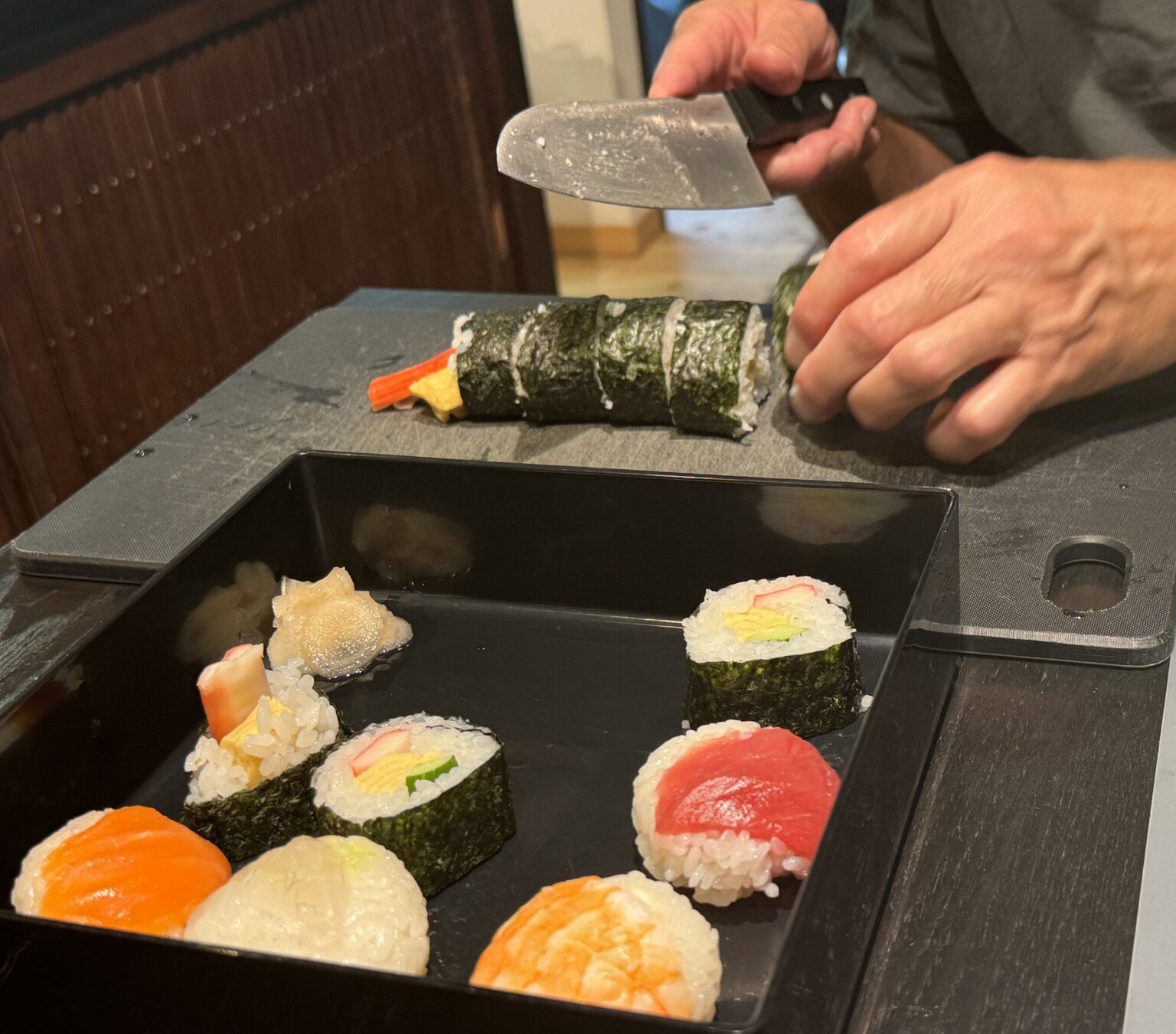Kyoto is quintessential Japan. With its treasure trove of shrines and temples, UNESCO World Heritage Sites, exquisite gardens and more, it’s the cultural and historical heart of the country. For first time visitors, this city should be at the top of your travel itinerary.
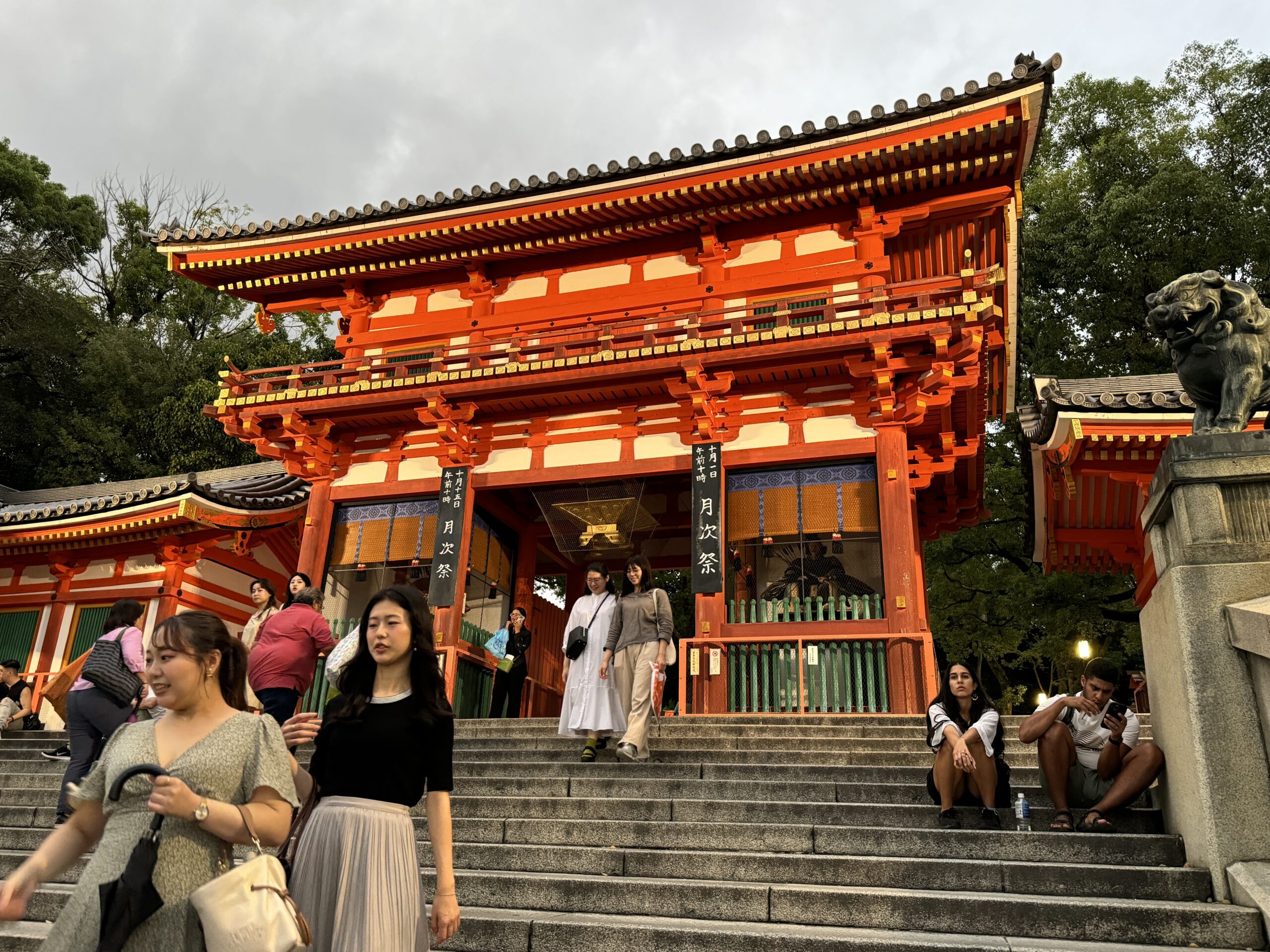
In addition to the many fascinating sights, put a Japanese cooking class on your list. It’s a great way to get a hands-on experience with the country’s delicious food.
On my recent trip to Kyoto, I opted to do an authentic Japanese sushi cooking class. I adore sushi and eat it whenever I can, but the idea of actually making it was intimidating. However, my thoughts were that even if I would never be able to replicate the process at home, the session would hopefully be fun…and tasty!
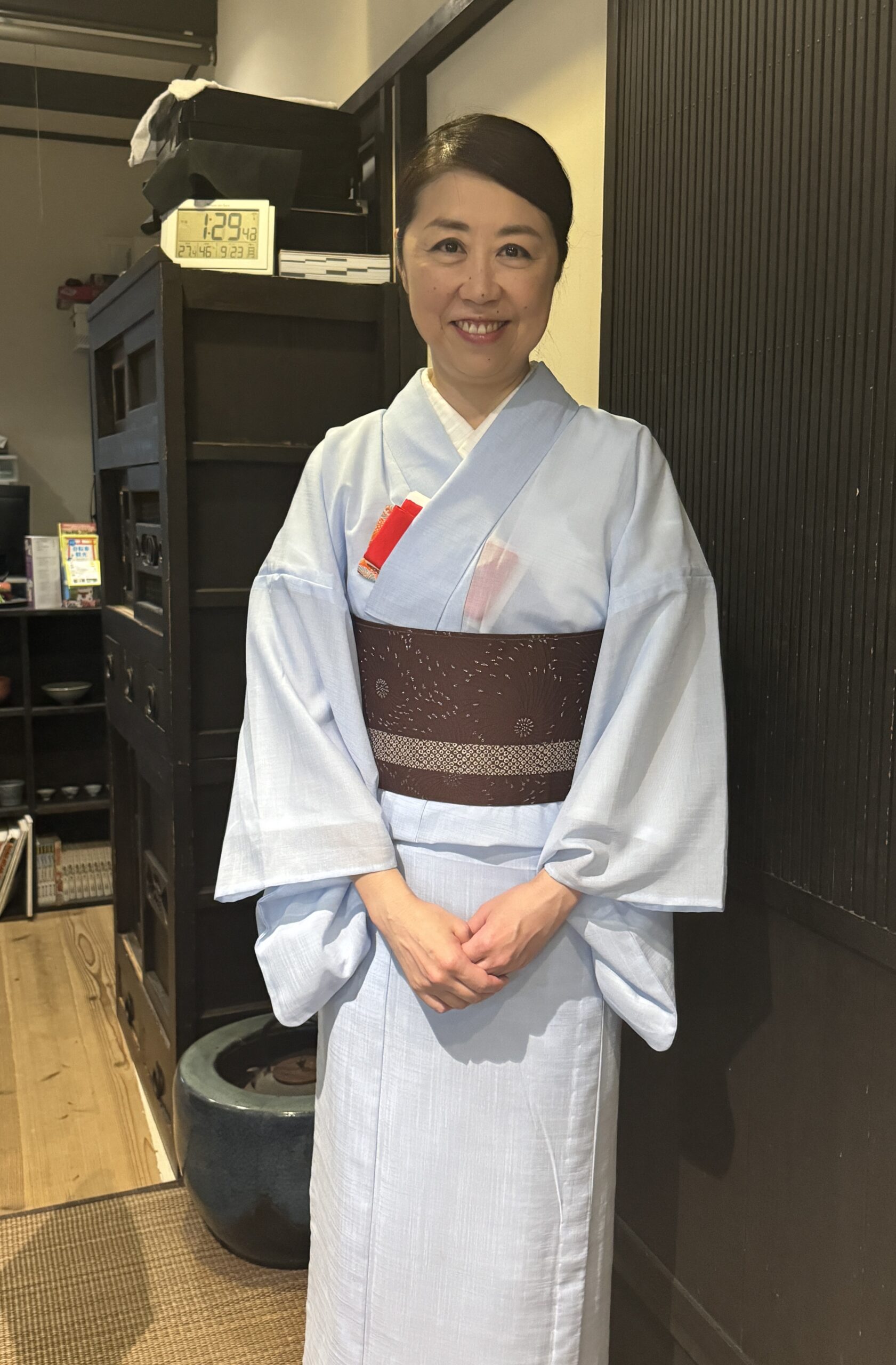
In byFood’s “Authentic Japanese Sushi Cooking Class in Kyoto,” you’ll learn some basic techniques of Japanese cuisine, along with the background of Japanese dishes, habits and customs. Kaori is the instructor and creator of the course, which is held in her traditional guesthouse. My husband and I were two of six participants in the session, ensuring personal attention for everyone.
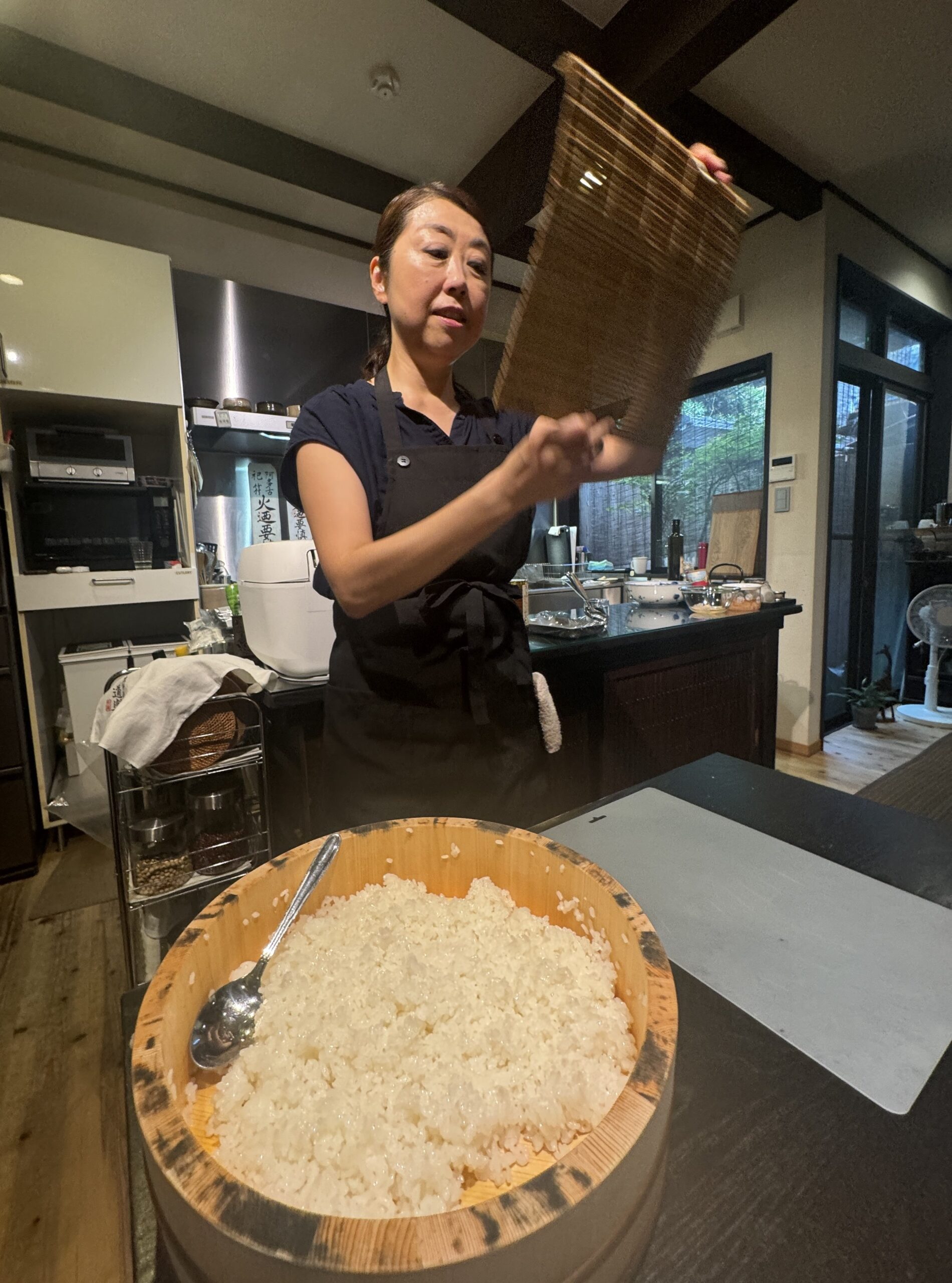
As an introduction, Kaori told us about umami, one of the five basic tastes along with bitter, sweet, sour and salty. She explained that umami, which is also known as monosodium glutamate, means “a pleasant savory taste,” in Japanese. She says, “It has a mild but lasting aftertaste,” and adds, “It’s difficult to describe and most people don’t recognize it, but it plays an important role in making food taste delicious, especially Japanese dishes.” Foods that have a strong umami flavor include meats, shellfish, fish, mushrooms, cheese, smoked and dried bonito and soy sauce.
We then moved on to table manners and right off the bat, I learned I had been using chopsticks incorrectly all these years. Kaori demonstrated the proper technique, explaining that this method may initially seem awkward for many of us.
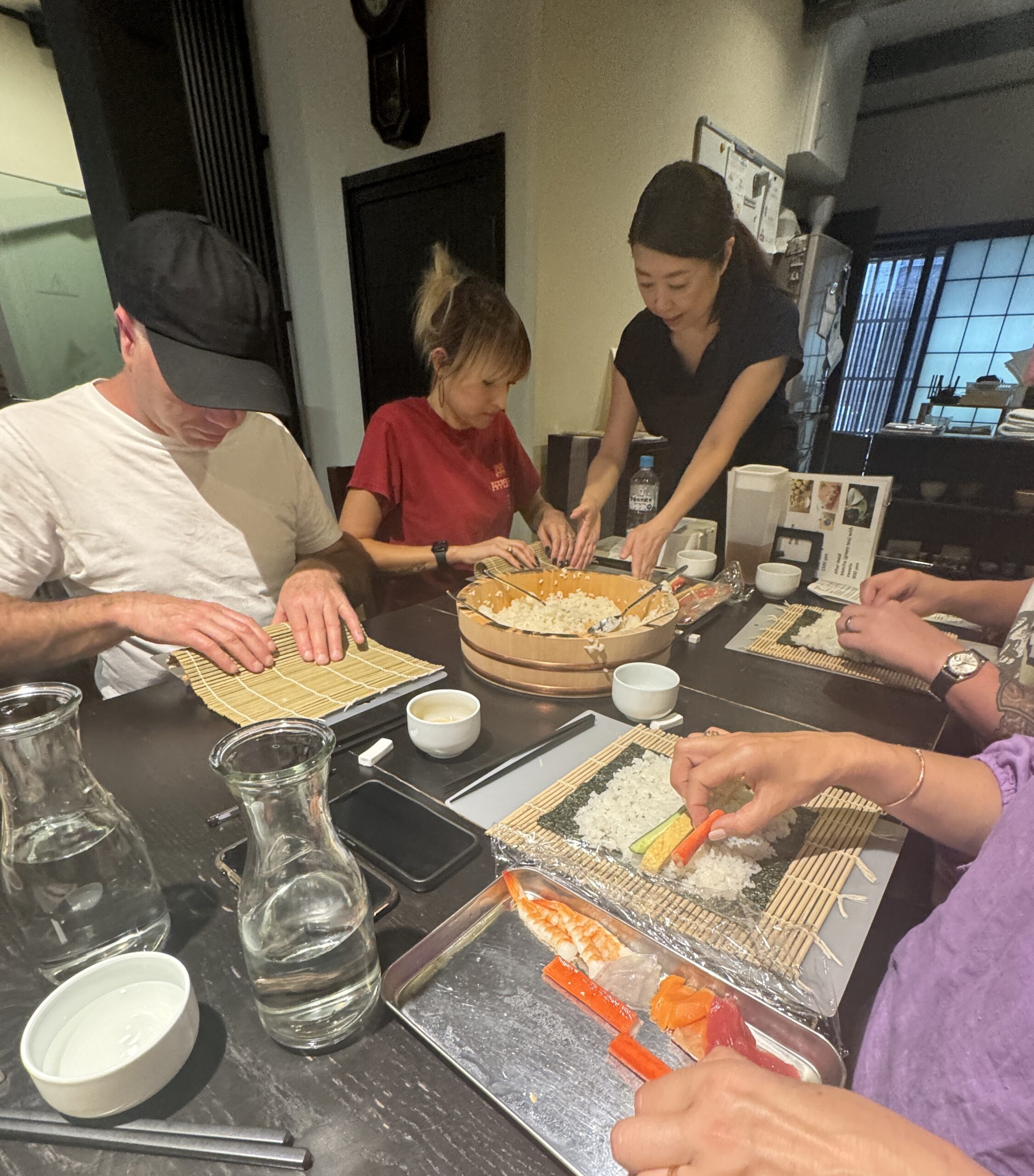
You hold the upper chopstick in between your index and middle fingers and support it with your thumb. Then place the lower chopstick on the first joint of your ring finger. The upper part of this chopstick should be firmly placed at the base of the thumb and forefinger. Keep the lower chopstick still and move the upper chopstick with your thumb, index and middle fingers as if you were writing with a pen.
Kaori noted that about thirty percent of countries in the world use chopsticks. Most of them use both chopsticks and spoon together. However, Japanese people use chopsticks only. This means that they hold tableware, such as a soup bowl, and eat directly from the bowl. I personally found this to be convenient and took pleasure in slurping my noodles, as do the Japanese.

Before eating a meal in Japan, Kaori taught us to say itadakimasu, which expresses thanks for the lives of the ingredients about to be received, as well as for the people that grew, gathered and prepared the food, like farmers, fishermen, chefs, etc. This is the way of thinking in Buddhism.
After eating, it’s polite to say gochisosamadeshite, which expresses thanks for the troubles and thoughts that went into the cooking and preparation.
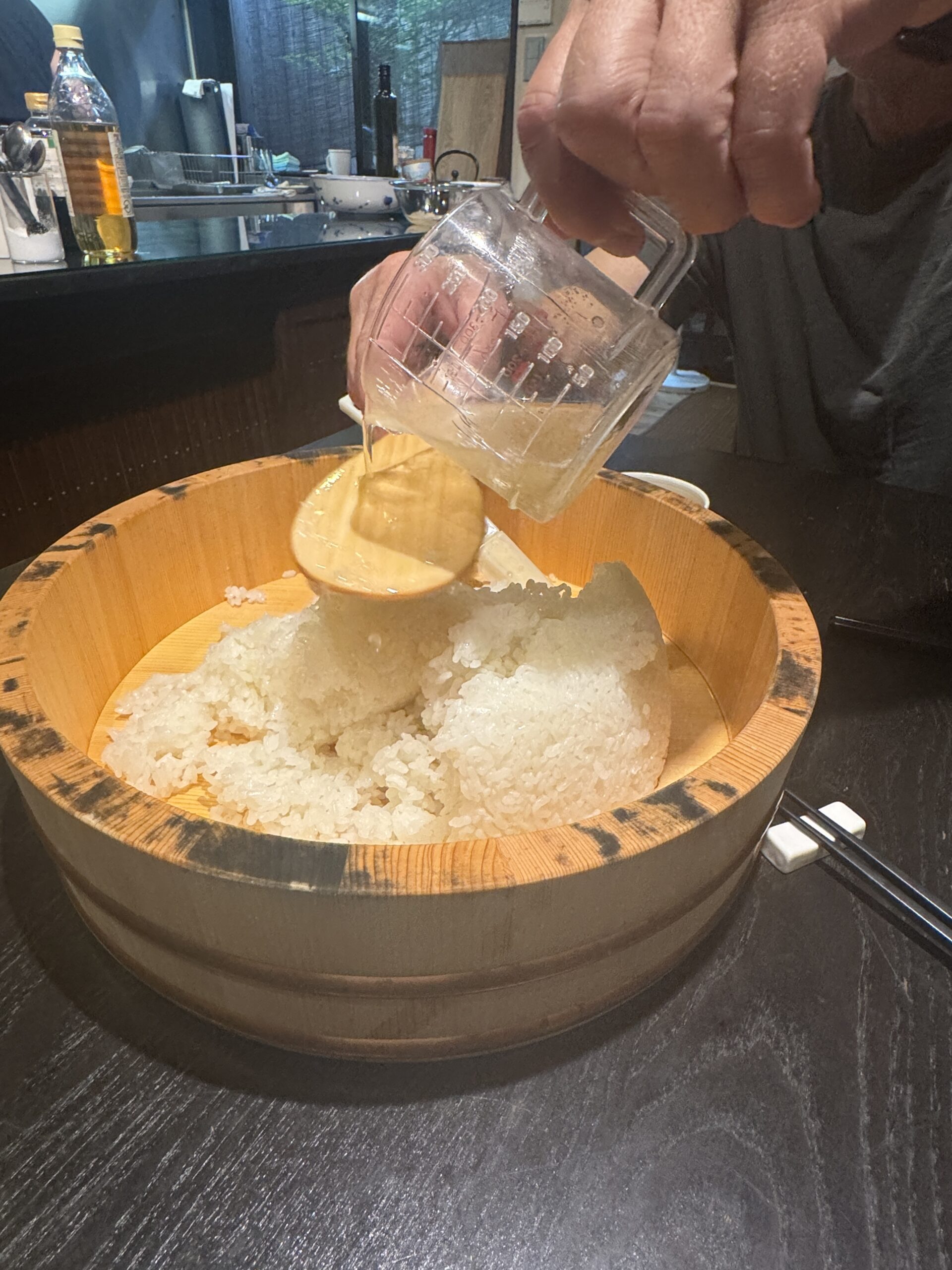
Rice is Japan’s most important crop and has been grown across the country for over 2,000 years. As the primary staple food of the Japanese diet, it has been called “the essence of the culture.” Most people know that a bowl of cooked rice is always included in traditional Japanese meals, but they probably don’t realize that the grain is also processed into different types of products like alcohol, vinegar and flour.
Japanese rice is short grain and becomes sticky when cooked. The majority of it is polished to remove the hard outer skin and eaten as white rice.
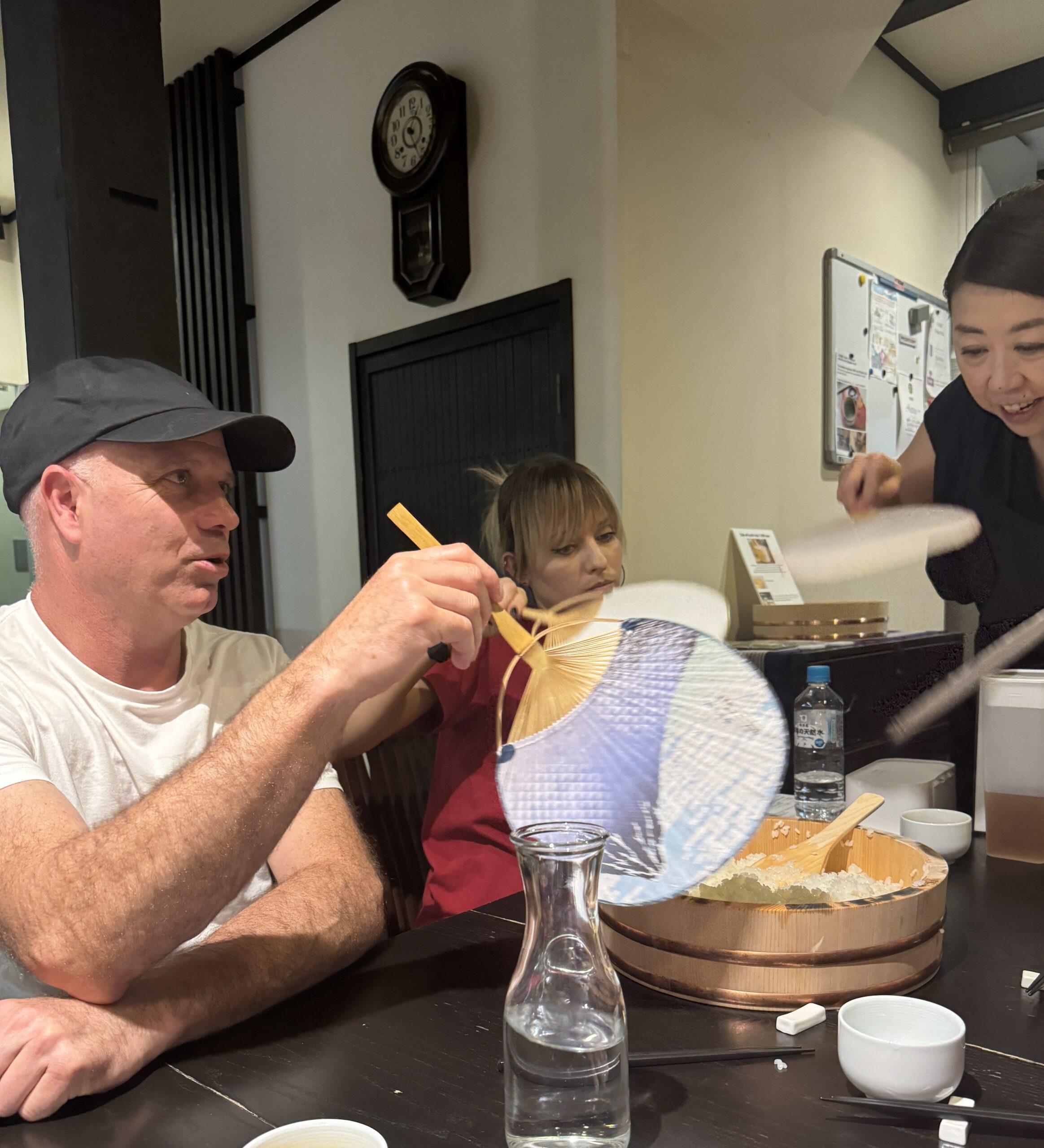
Preparing rice involves several steps, which takes time, from washing and mixing, to draining and heating. Plus, with sushi rice, you’ll need to add in vinegar, sugar and salt. Kaori showed us how to use a flat wooden spoon to mix everything quickly in a cutting motion, while cooling it with a hand fan. You need to put some muscle into loosening the rice so no lumps remain. And be prepared to fan until your arm tires!
When the rice cools down to body temperature, it’s done. You’ll need to cover it with a clean cloth moistened with water and tightly squeezed. The cloth covering protects the rice from drying out.
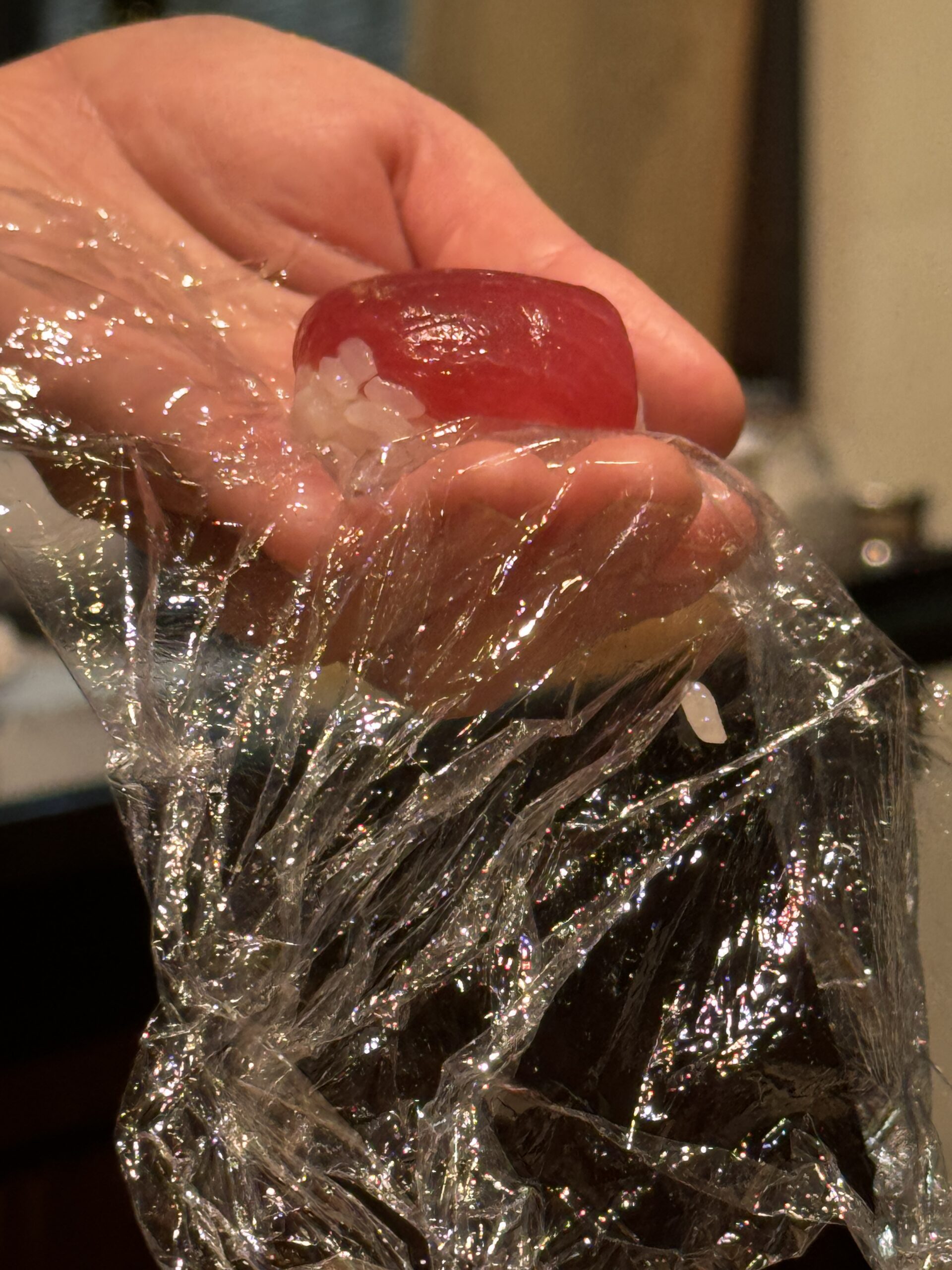
Making the actual sushi was the most fun. Temari sushi is basically rolled balls with your favorite ingredients on top, like salmon, shrimp, tuna, thin omelet slices, and more. You put a small scoop of rice on a piece of plastic wrap and top it with the ingredient, then squeeze the wrap to make a ball.

Maki sushi is what most people are familiar with, as it’s sushi rolled in nori or seaweed sheets. You place a nori sheet on a special bamboo mat, then put the rice on the sheet and spread it, leaving room at the top and bottom. The ingredients are set into the center of the rice in a shallow hollow. Now it’s time to lift the edge of the mat and nori sheet together and bring them over to meet the far edge of the sheet. Press the roll and cut crosswise into bite-size pieces. Voila!
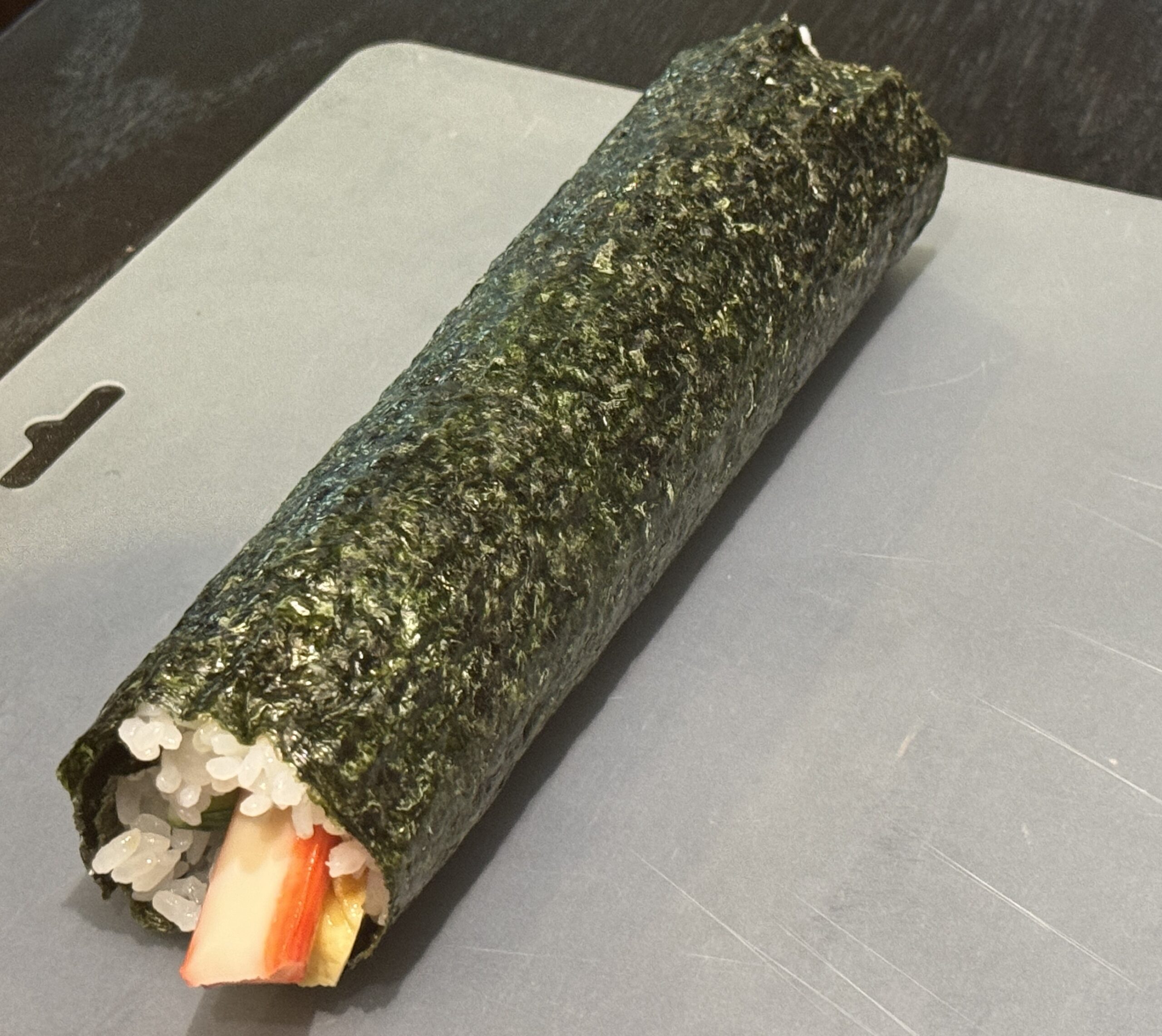
In addition to sushi, Kaori demonstrated how to make pickled ginger (fresh young ginger which is tender and mildly spicy is best to use) and dashi soup stock, the base of countless Japanese dishes. The soup stock consists of kelp and dried bonito flakes, which is boiled, simmered and strained to create a clear soup. You can later add seaweed, dried wheat gluten or another garnish, plus some salt and soy sauce to complete the soup.
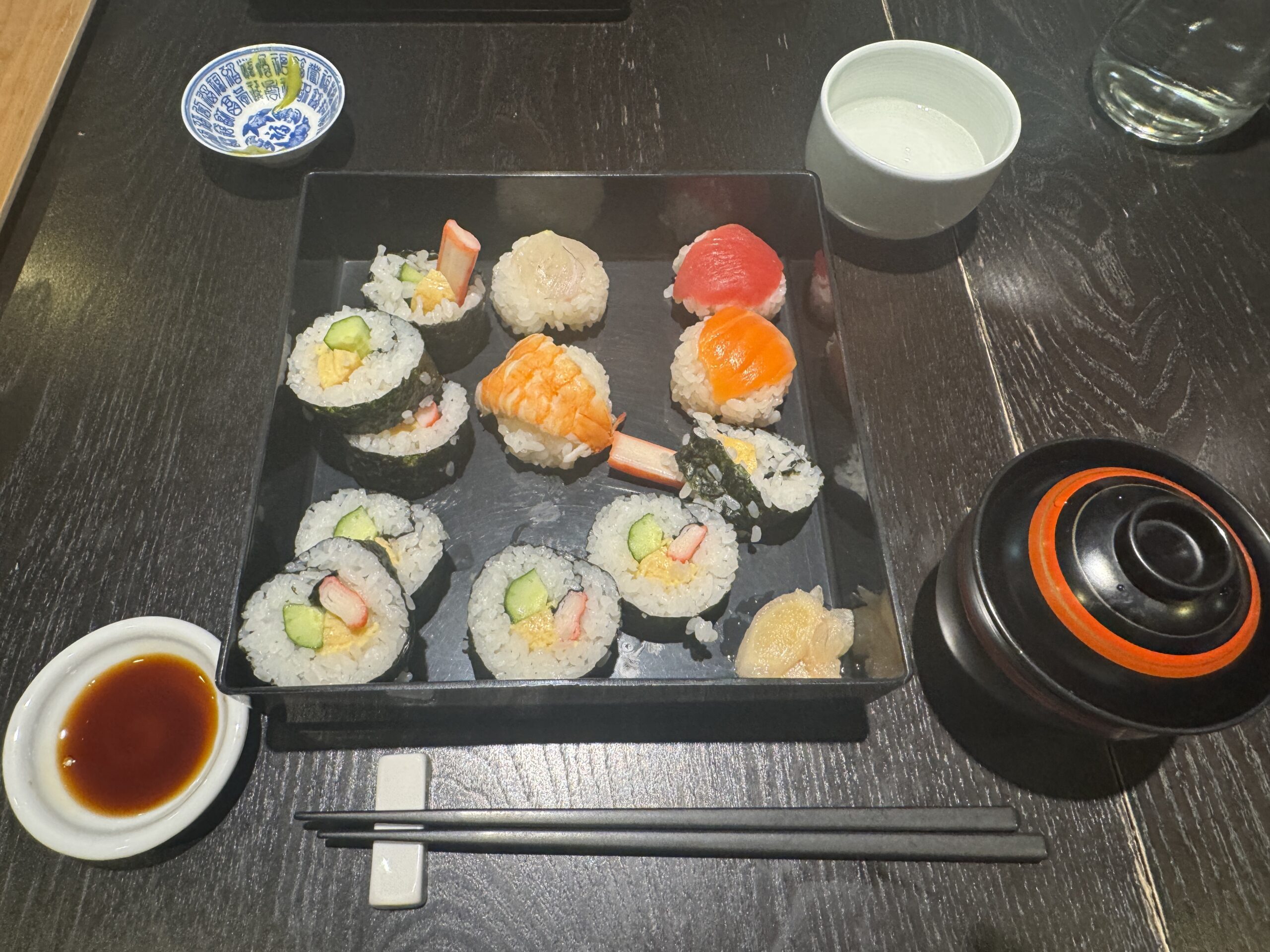
When everything was done, we got to reap the rewards of our labors. The meal, which included all of the above, accompanied by barley tea, was delicious!
Throughout the session, Kaori was organized, spoke English well, communicated effectively and patiently explained each step along the way. She also provided an excellent handout with the recipes.
Though odds are that I’ll probably never make sushi at home, I’m no longer intimidated by the process, as I understand it better. Plus, I have a greater appreciation for all the work that goes into creating these dishes. And now, I’m off to my favorite Japanese restaurant where I can watch the real pros in action!

